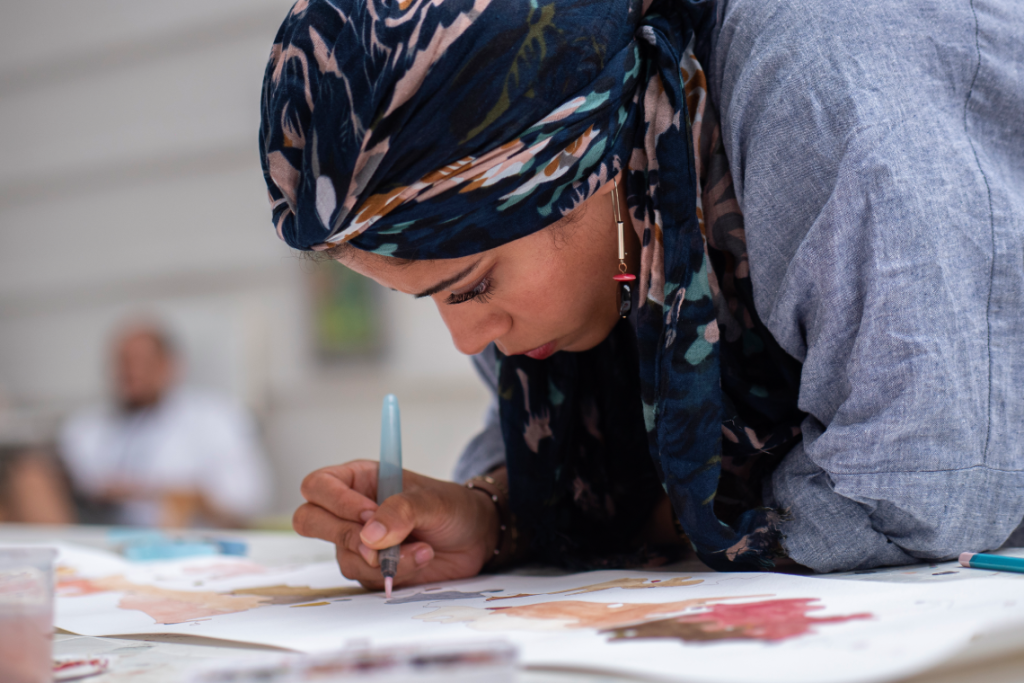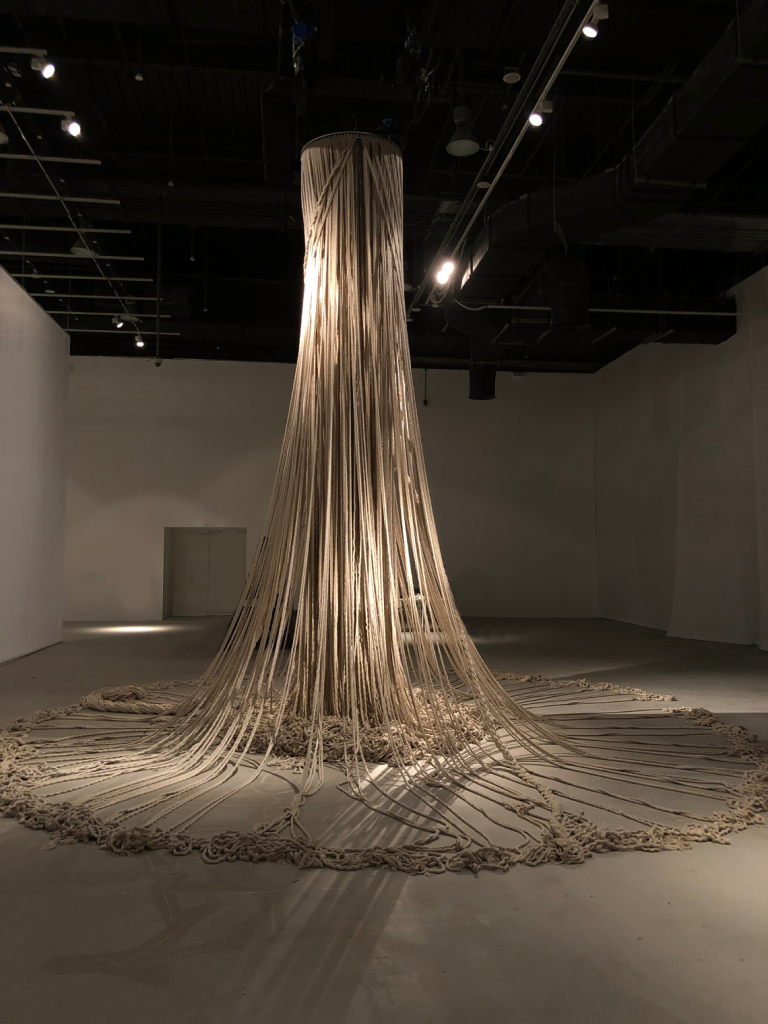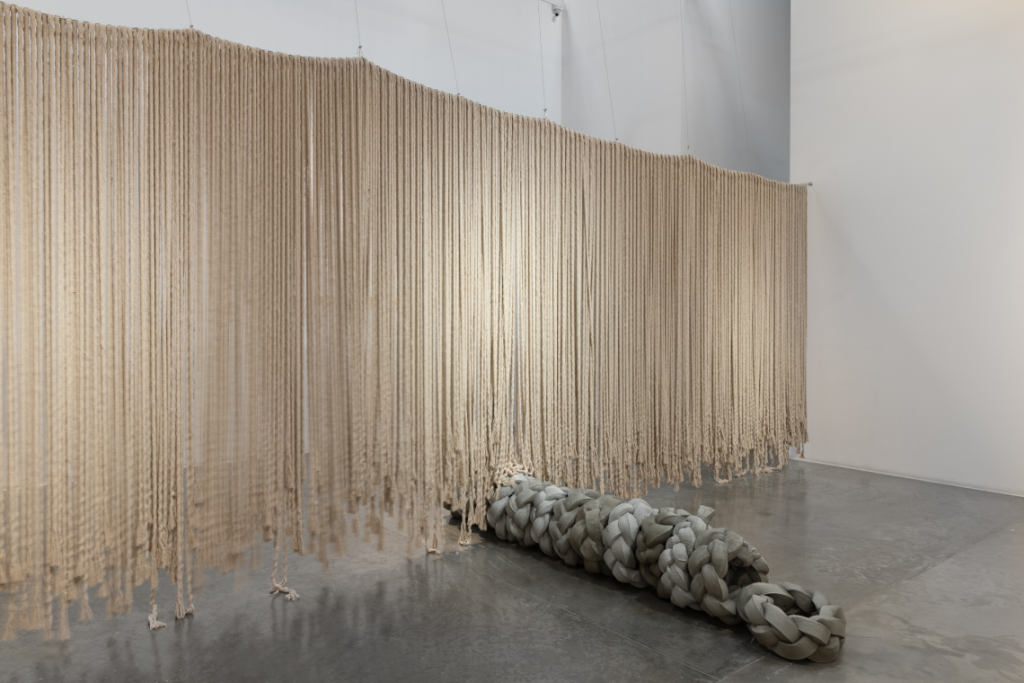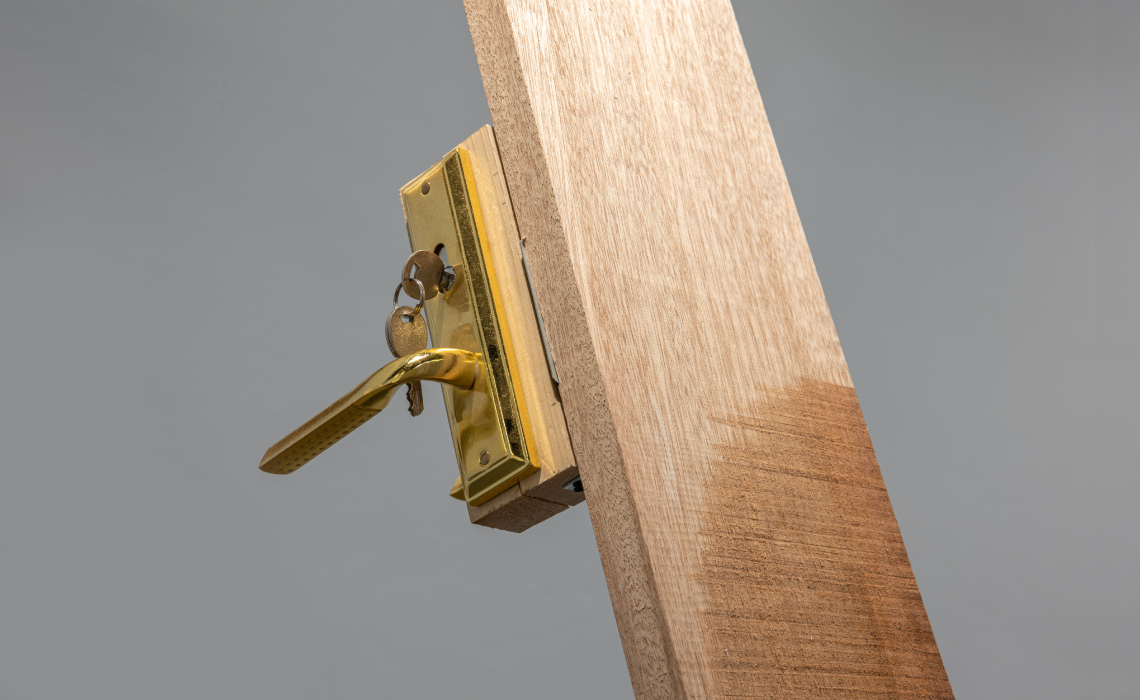The mixed-media art of AFRA AL DHAHERI urges the viewer to consider social constructs through the prism of materials as disparate as concrete and hair. In a careful analysis of the public and private, she examines the unification of the artificial and the innate, the constructed and the dismantled.
Words by Laura Beaney
For Emirati artist Afra Al Dhaheri, concrete promised change. Coming of age in Abu Dhabi, a city restless for reconfiguration during the 1990s, the composite construction material mapped out whole new communities and solidified their boundaries. As an MFA student at the Rhode Island School of Design, she surrounded herself with it; her studio was stocked with cement from Home Depot – the material felt like home.

Al Dhaheri’s art is both fixed on architectural intricacies and keen to tear them down. “Concrete is usually understood as a brutal material, but when united with delicate materials it takes on a new fragility and meaning,” she notes. Her early explorations connected human-made structures to internal processes, like the speed of registering memory. Observing the lived space in the manner of French philosopher Gaston Bachelard,1 Al Dhaheri considers how our perceptions of the places we inhabit might inform our thoughts and memories. She meditates upon how the passing of time may feel, whether in her rapidly modernizing homeland or when negotiating the static lines of an American metropolis.

In 2017 Al Dhaheri returned from the USA and became a prominent figure in the UAE’s nascent cultural scene. She is a founding member of Bait 15, an artist-run space which opened in Abu Dhabi in 2017, and took up a position as assistant professor of visual arts at Zayed University. She has exhibited at T + H Gallery in Boston, USA with her solo show Inevitable Ephemera, and participated in several group exhibitions, including Beyond: Emerging Artists at Abu Dhabi Art in 2020. Tasreeha (2020), her towering six-meter-high installation exhibited there, recalled Sheila Hicks’s explorations in fabric and fibre. Spiralling rope denoted Al Dhaheri’s hair, which she presents as a container of memory and time.
The artist understands that hair, like concrete, has the capacity to record and store memory; in water, it flows freely and expands, but when dry it retracts, remembering itself as it springs back to its prior form. Her latest work builds upon her previous explorations yet also demonstrates a shift from passive reflection to an active state of questioning. Al Dhaheri asks “Why might physical infrastructures change so rapidly yet social ones remain rigid?”

It’s a question that, she says, “itches”. Split Ends, her recent solo exhibition at Green Art Gallery, Dubai delved into this. Al Dhaheri draws from the philosophy of Finnish architect and theorist Juhani Pallasmaa, who unpacks the way in which the built form is experienced through existence. The timeless task of architecture, Pallasmaa reasons, is to create “embodied and lived existential metaphors that concretise and structure our being in the world.”2 The body of work produced for the exhibition traversed the line between the organic and the unnatural. Materials were drawn from every part of the artist’s life, ranging from the most immediate (her own hair) to the most artificial (cement). The curation, proposed in dialogue with Munira Al Sayegh, juxtaposed pieces such as Split Ends (2020), a snaking procession of grey braids woven from materials common to the urban environment (cement, resin and foam), and Line Hair Drawing No. 2 (2020), with individual strands of the artist’s hair delicately drawn out across a fragile sheet of paper. Manipulating stature and scale, Al Dhaheri engineered tension throughout the room. Individual hairs – the material trace of the body – appeared next to cumbersome concrete. Smaller works were partitioned off by Fil Al Shaar (2020), a curtain of brown rope suspended in air; tresses tumbled down to section off the room, with glimpses of concrete braids barely – but significantly – visible beneath its waves.
Saturated with notions of race, faith, the personal and the political, hair is highly charged. At the NYU Abu Dhabi Art Gallery, Al Dhaheri encountered Mona Hatoum’s Hair Necklace (2013), a sculptural piece in which the familiarity of the form (a woman’s necklace) is disrupted by the choice of material (the artist’s own hair, collected over several years and stored in shoe boxes). “I was taught that hair is a private body part, but it’s also significant to my identity. People knew me for it in school,” says Al Dhaheri. “I considered what it might mean for someone to hide something so personal to their identity. Conscious that this important part of me might not exist publically, I began to collect it. Hatoum’s piece instigated that in me,” she explains.
With hair as her metaphor, the artist zones in on the ‘split end’, that brittle fraying of a hair from which the exhibition takes its name. It fixes the liminal space between the start and conclusion of transformation, the moment when one is reminded to take action, to trim. “There are many nuances relating to the way that one should perform with one’s body in public,” she continues. “They’re not written anywhere, just collectively understood social constructs,” she says.
Al Dhaheri urges the viewer to search for the multifaceted meanings packed into her art. Some of these are set out in the exhibition’s accompanying text, by curator Al Sayegh, yet much remains unsaid. Al Dhaheri’s art conjures up new ways to see and understand the rigidity of the built environment and the social structures that encircle it. She highlights how the material and mythological elements which give structure to society, whether reinforced by rhetoric or concrete, are always tenuous and susceptible to corrosion or change.
1 Bachelard, Gaston. The Poetics of Space. Boston: Beacon Press (1969). 2 Pallasmaa, Juhani. The Eyes of the Skin: Architecture and the Senses. Chichester: Wiley-Academy (2005), p.71.



